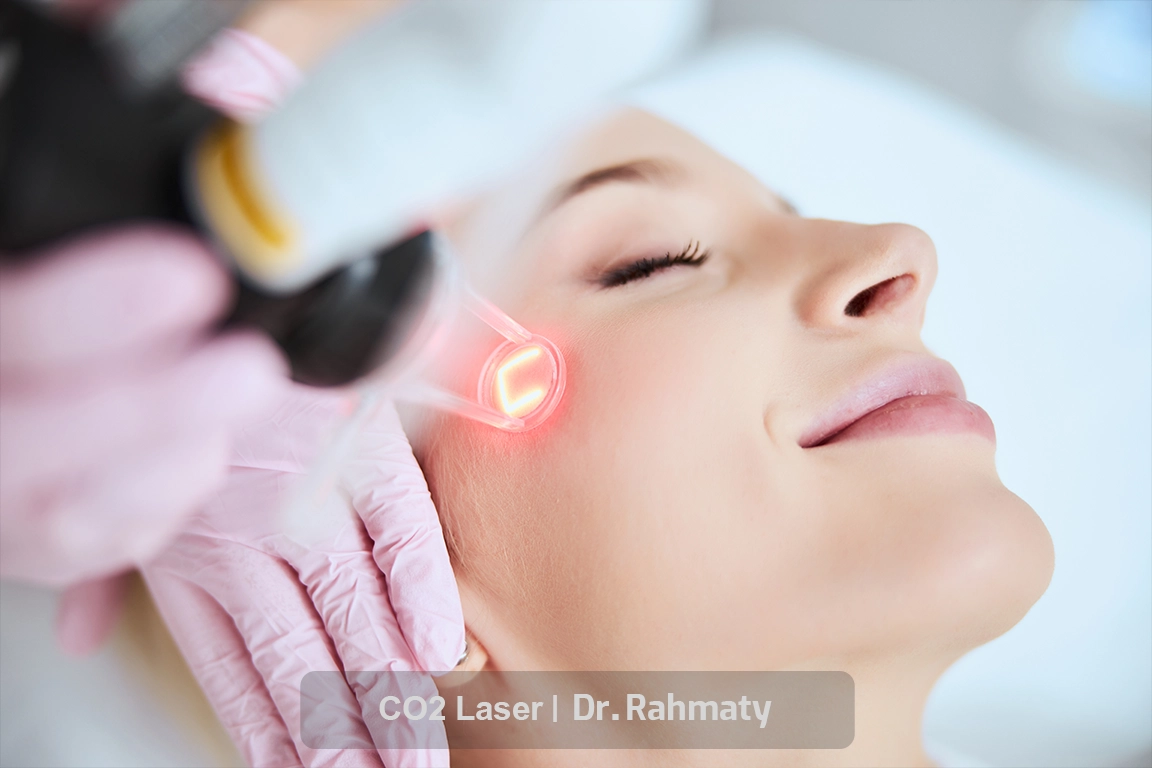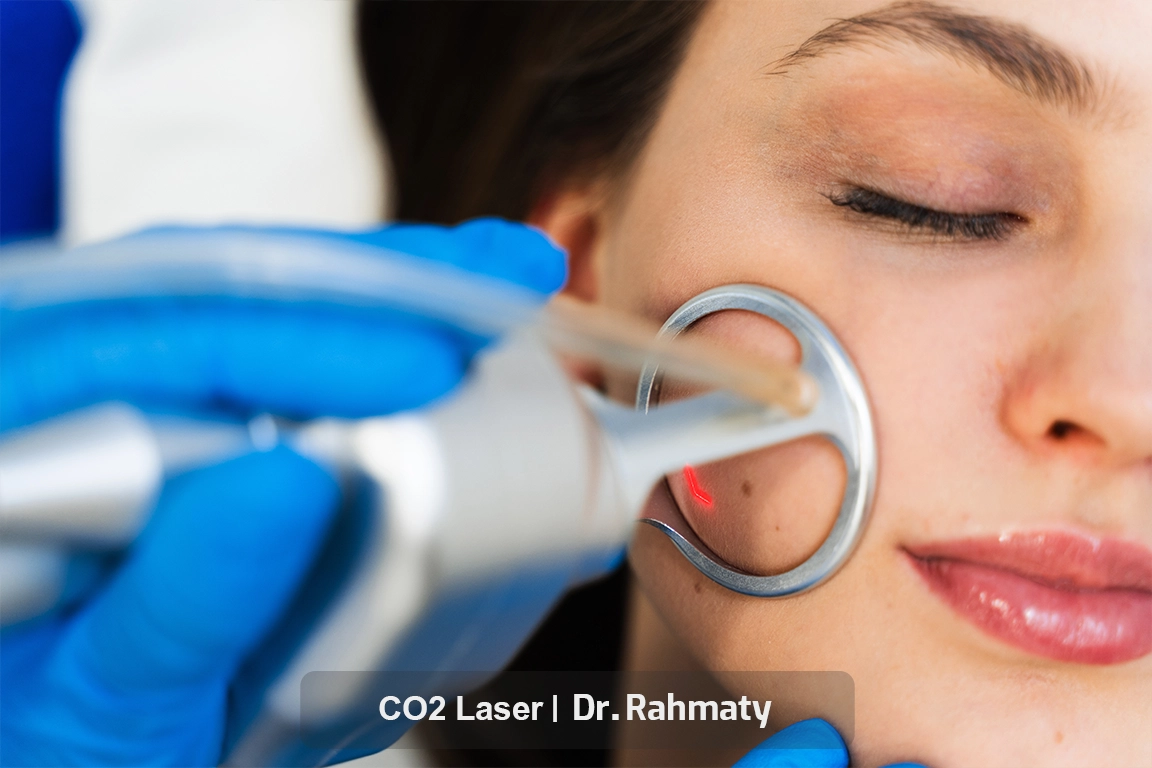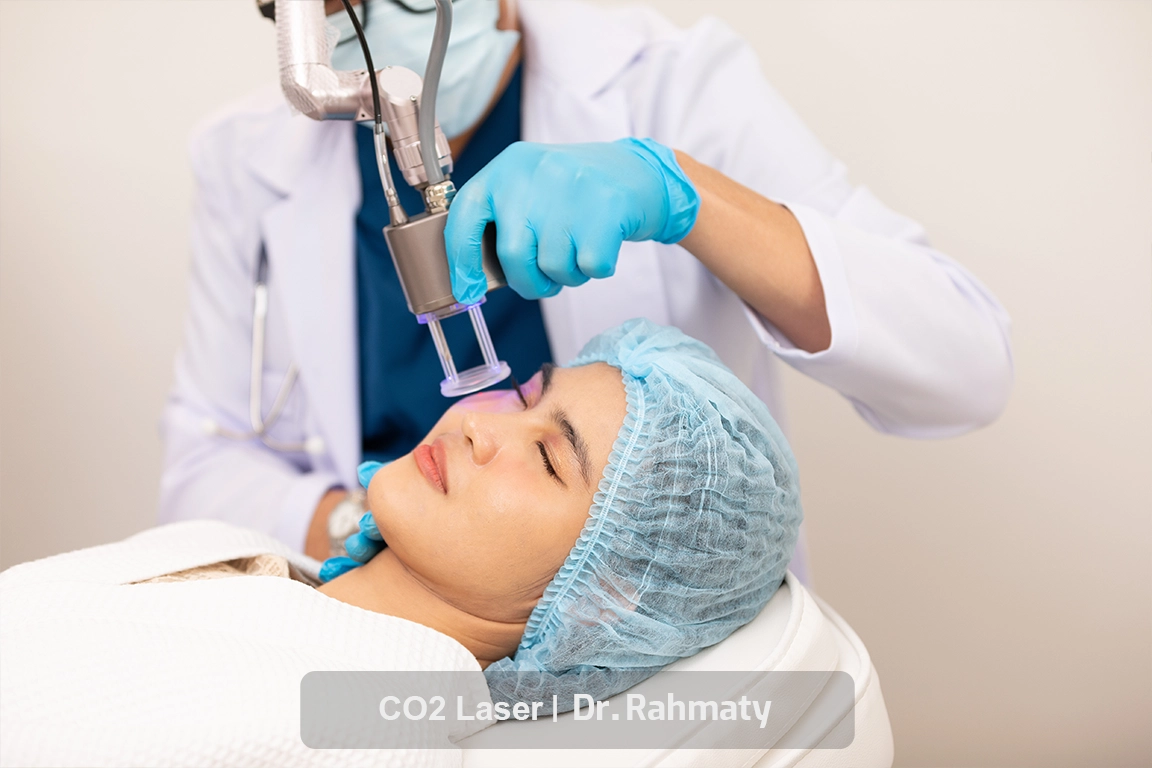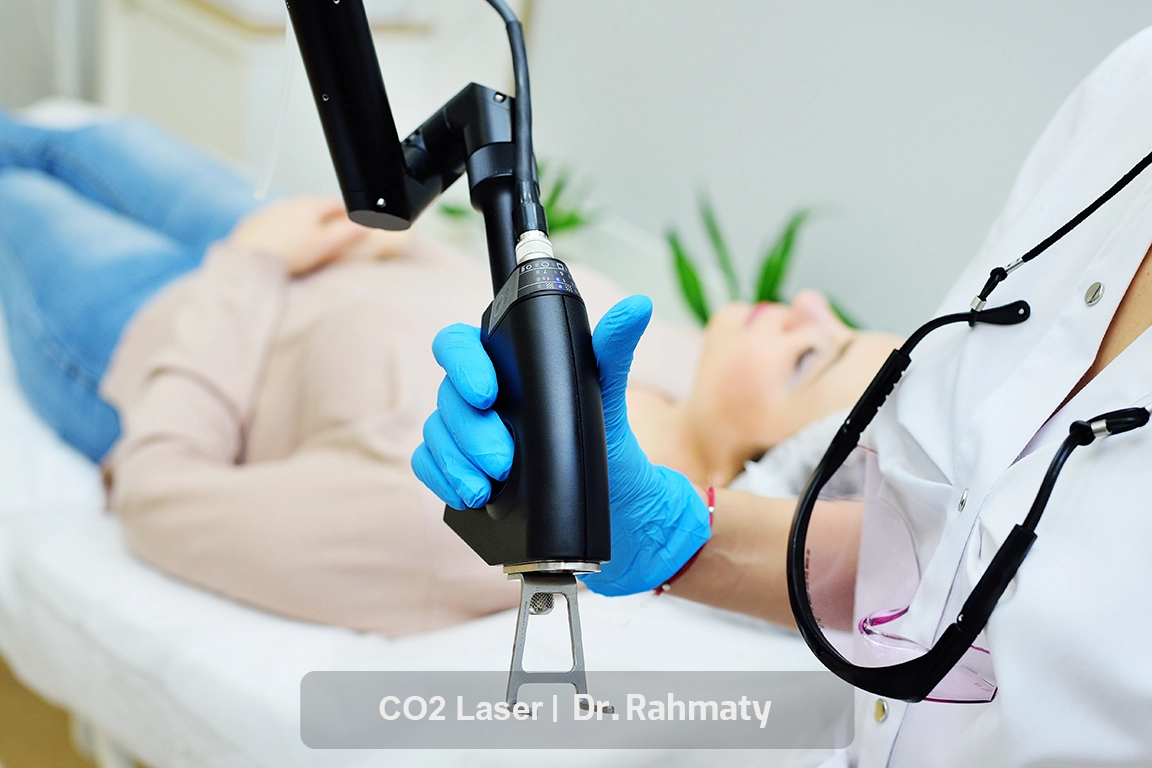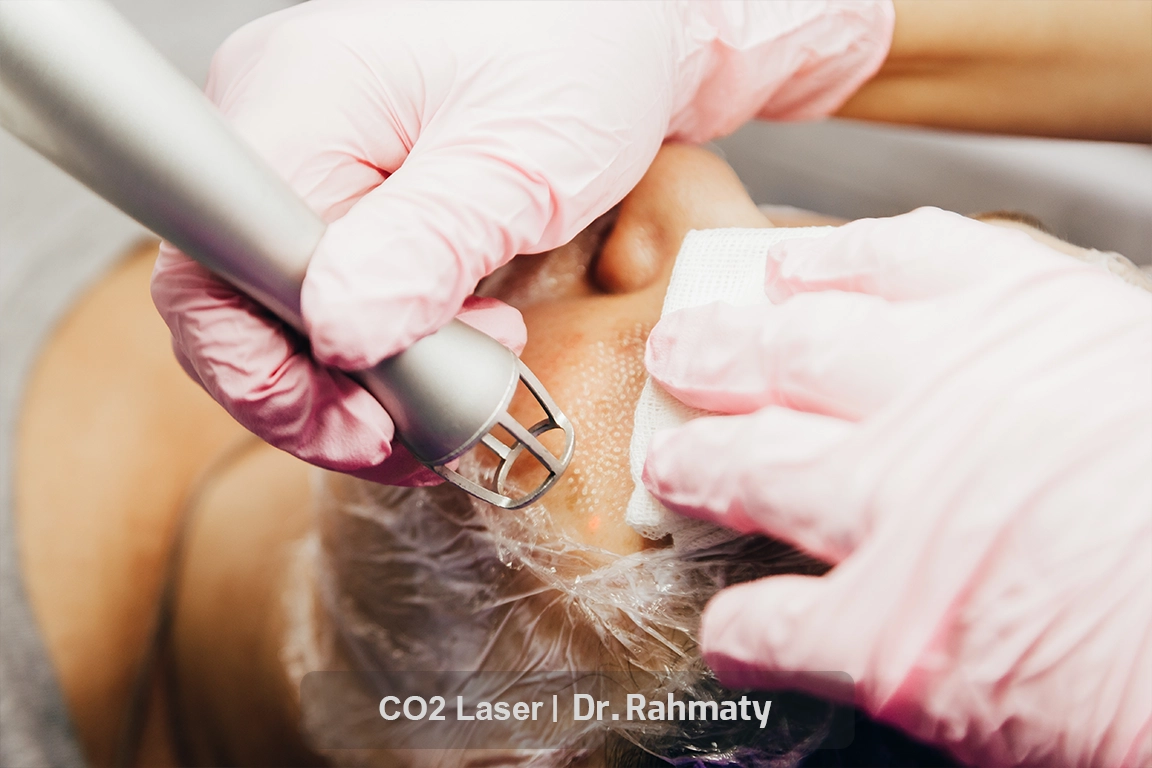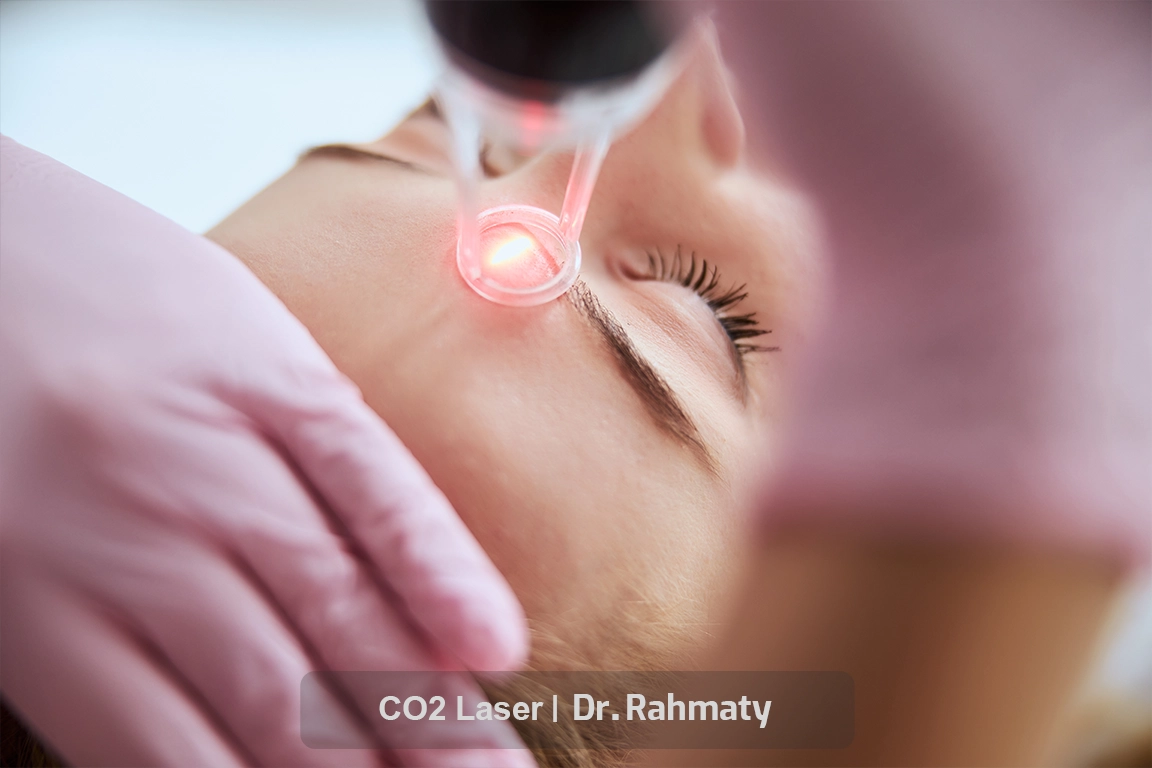What is DEKA CO2 Laser and What Role Does It Play in Surgery?
1. Introduction
In recent decades, advances in medical science have become closely intertwined with laser technology. Because of their high precision, controllability, and direct effect on body tissues, lasers have replaced many traditional surgical methods. One of the most important and widely used laser technologies in modern surgery is the DEKA CO2 laser, which is recognized as one of the most advanced medical laser systems in the world.
The applications of the CO₂ laser are extensive — from skin cosmetic surgery and rejuvenation to gynecological treatment, ENT (ear, nose, throat) surgery, dentistry, and even general surgery.
This laser emits infrared light, and its energy is absorbed by water molecules in tissues, allowing precise cutting and vaporization without significant harm to surrounding areas. This feature makes DEKA CO2 laser surgery a modern, safe, and low-complication method in today’s medicine.
In this article, we plan to provide a comprehensive review of what DEKA CO2 laser is, how it works, its medical applications, and why it is considered one of the top choices in modern surgery. If you are looking to fully understand this technology or to obtain precise information about it for medical or cosmetic treatments, this article will be a complete guide for you.
2. What Is the DEKA CO2 Laser?
The CO₂ laser is among the oldest yet most frequently used medical lasers, employing carbon dioxide (CO₂) as the laser medium. This laser was first introduced in the 1960s and quickly earned its place in medicine because of its unique capacity for precise cutting and tissue vaporization.
DEKA, an influential Italian brand in laser equipment manufacturing, has developed CO₂ DEKA devices that bring a new level of precision and safety to surgical procedures. These machines are specifically designed for medical use, and their adjustable parameters (such as output power, pulse duration, and penetration depth) allow physicians to adopt the most suitable settings based on tissue type and treatment goals.
Key Characteristics of the DEKA CO2 Laser:
High accuracy: Able to make millimetric cuts with minimum damage to adjacent tissues.
Safety: Reduced risk of bleeding and infection because of the laser’s sterilizing effect.
Versatility: Usable in many medical specialties — from dermatology and cosmetics to gynecology and dentistry.
Advanced technology: Equipped with smart systems to adjust wavelength and laser intensity.
In simpler terms, the DEKA CO2 laser is a tool that bridges the gap between traditional medicine and modern technology, paving the way for blade-free, minimally invasive surgical methods.
3. Mechanism of Action of the DEKA CO2 Laser
To better understand why the DEKA CO2 laser is so successful in medical surgery, we must become familiar with how it works. This laser is based on carbon dioxide (CO₂) and emits light with a wavelength of 10,600 nm. This wavelength is particularly absorbed by water molecules in tissues.
Since more than 70 % of the human body is composed of water, the energy from the CO2 DEKA laser is rapidly absorbed by water and causes instantaneous vaporization of the target tissue. This allows for extremely precise cutting while simultaneously coagulating tiny blood vessels. As a result, CO2 laser surgeries are typically performed with minimal bleeding and minimal damage to surrounding tissues.
Steps of Laser Impact on Tissue:
Energy absorption by water: The laser beam hits the tissue surface and its energy is absorbed by cellular water.
Cellular vaporization: The absorbed energy causes rapid vaporization of the target tissue.
Coagulation: Concurrently, small blood vessels are sealed, reducing bleeding.
Sterilization of the surgical site: The heat from the laser has a disinfecting effect, lowering the risk of infection.
Comparison with Traditional Surgical Methods
In traditional surgical methods, the surgeon uses a scalpel to cut tissues, which often leads to bleeding and damage to adjacent areas. In contrast, with DEKA CO2 laser surgery:
The incision is far more precise.
Because blood vessels are sealed during cutting, bleeding is nearly eliminated.
The need for stitches and heavy dressings is reduced.
The recovery period is shorter.
Adjustability in DEKA CO2 Laser
One major advantage of DEKA CO2 laser devices is the ability to adjust beam intensity, exposure duration, and depth of penetration. This allows surgeons to tailor the laser’s effects according to the type of surgery (skin, gynecology, dentistry, or ENT). Hence, the applications of CO₂ laser are highly diverse, working both for superficial skin treatments and deeper, more invasive surgeries.
4. Applications of CO2 Laser in Medicine
Thanks to its precision and ability to vaporize tissue, the DEKA CO2 laser is now used across many medical specialties. It holds a special position in both therapeutic and cosmetic fields. Below is a comprehensive look at its applications in different medical branches.
4.1 Dermatology and Cosmetic Applications
The skin is one of the major areas where the DEKA CO2 laser has a prominent role.
• Skin Rejuvenation (Skin Resurfacing)
One of the most common uses of DEKA CO2 laser is for skin rejuvenation and resurfacing. In this method, damaged superficial layers of the skin are vaporized by the laser, and over time new cells replace them. This process leads to:
Reduction of fine and deep wrinkles
Improvement in skin texture and clarity
Stimulation of collagen production for firmer, more youthful skin
• Scar and Acne Mark Treatment
Many people suffer from acne scars or old wound scars. The DEKA CO2 laser helps by removing scar tissue and stimulating skin regeneration, resulting in a smoother skin surface and better appearance.
• Removal of Moles and Skin Lesions
Moles, warts, and other skin lesions often trouble patients. The DEKA CO2 laser can remove these lesions completely, with minimal bleeding and without invasive surgical methods.
4.2 ENT (Ear, Nose, Throat) Applications
In the domain of ear, nose, and throat specialties, the DEKA CO2 laser is highly valuable because it can cut soft tissue very precisely.
• Removal of Nasal Polyps and Lesions
The CO₂ laser can remove nasal polyps or benign lesions in the airway with minimal damage and bleeding.
• Tonsil and Laryngeal Lesion Surgery
In certain cases, tonsil removal or treatment of laryngeal lesions (such as vocal nodules) is performed with the DEKA laser. This method reduces bleeding and accelerates recovery.
• Cosmetic Nose Surgery
Although most rhinoplasty procedures are done via traditional techniques, the DEKA CO2 laser can assist in removing superficial lesions or in thinning soft tissue on the nose.
4.3 Gynecology and Obstetrics Applications
One of the newer and increasingly popular areas in which the DEKA CO2 laser is used is women’s health and aesthetic gynecology.
• Vaginal Rejuvenation
With aging or after childbirth, vaginal tissues may become lax or dry. The DEKA CO2 laser can stimulate collagen production in vaginal tissues, enhancing firmness, improving moisture, and rejuvenating this area.
• Treatment of Urinary Incontinence
A common issue in women, especially after childbirth or during menopause, is urinary incontinence. The DEKA laser, by strengthening pelvic floor tissues and improving muscle tone, can be effective in treating this condition.
• Treating Vaginal Dryness and Atrophy
In menopause, lower estrogen levels cause vaginal dryness and atrophy. The CO₂ laser can reconstruct vaginal tissue and alleviate these uncomfortable symptoms.
4.4 Dental Applications of CO2 Laser
The DEKA CO2 laser also has a distinguished role in dentistry.
• Gum Surgery
A common problem is gingival overgrowth or inflammation. The DEKA laser can precisely remove excess gum tissue, often with minimal bleeding or pain.
• Treatment of Oral Lesions
Some benign oral lesions, such as fibromas or oral warts, can be removed easily and noninvasively using the CO₂ laser.
• Suture-Free Surgery
In many dental cases, using the DEKA CO2 laser removes the need for sutures and multiple dressing changes, leading to faster healing.
4.5 Other Medical Applications
Beyond the aforementioned fields, the CO₂ laser is useful in other branches of medicine:
Plastic surgery: removal of tumors or benign lesions, or reduction of excess tissue
Neurosurgery: in certain specific cases, precise cutting of neural tissue with minimal collateral damage
General surgery: excising small tumors, fistulas, or benign lesions in the body
5. Advantages of DEKA Laser Surgery
When we talk about modern and minimally invasive surgery, one of the first technologies that come to mind is the DEKA CO2 laser. The reason for its special place is the many remarkable advantages it offers over traditional surgical approaches. Below are the most important benefits:
1. Precise cutting and vaporization of tissue
One standout feature of the DEKA CO2 laser is its ability to create extremely fine, delicate cuts. Surgeons can control beam intensity and duration to remove exactly the desired tissue without harming surrounding structures — a crucial trait in delicate surgeries (skin, dentistry, gynecology, etc.).
2. Very low bleeding
In traditional surgery, incisions with a scalpel often cause bleeding. In contrast, the DEKA laser seals small blood vessels during cutting, minimizing bleeding. This not only simplifies the procedure but also aids faster recovery.
3. Less pain and faster healing
Because the cutting is precise and surrounding tissues are minimally affected, postoperative pain after CO₂ laser surgery is significantly less than in traditional methods. In addition, the recovery period is shorter and patients return to their daily activities sooner.
4. Reduced risk of infection
The DEKA CO2 laser has a sterilizing effect. The heat generated by the laser disinfects the surgical area, reducing the chance of postoperative infections.
5. Better cosmetic results
One of patients’ main concerns is the presence of scars. Because of the high accuracy and reduced bleeding, laser surgery typically leaves fewer scars. This makes the CO₂ laser especially popular in cosmetic and plastic surgeries.
6. Less need for sutures
In many cases, cuts created by the CO₂ laser don’t require suturing or require very few stitches. This is more convenient for patients and speeds up healing.
7. Applicability across multiple medical specialties
Another advantage of the DEKA CO2 laser is its versatility. From skin rejuvenation, treating women’s issues, dentistry, ENT surgery, to more specialized surgeries, it can be used broadly.
8. Lower patient stress
Many patients fear blades and bleeding. Using the CO2 DEKA laser, with reduced or eliminated bleeding, significantly lowers patient anxiety and provides a more modern, comfortable surgical experience.
✅ Altogether, laser surgery with DEKA combines high precision, increased safety, better cosmetic outcomes, and patient comfort — features that make it one of the top choices for both doctors and patients.
6. Limitations and Contraindications of the DEKA CO2 Laser
Despite all its advantages and broad applications, this method, like every other technology, has limitations and is not suitable for everyone. Being aware of these points helps physicians make the best therapeutic decision and ensures patient safety.
1. Active skin diseases
Individuals who have an active skin infection, herpes, or inflammatory lesions at the intended treatment site should not undergo CO₂ laser surgery because the laser’s heat may exacerbate these conditions or spread infection.
2. Coagulation disorders or anticoagulant medications
People who have clotting disorders or are on blood-thinning medications (e.g. warfarin or aspirin) may be at greater bleeding risk. In such cases, the physician must carefully evaluate before using the DEKA laser.
3. Uncontrolled systemic diseases
Patients with uncontrolled systemic diseases such as uncontrolled diabetes, high blood pressure, or serious heart conditions may not be ideal candidates for this laser surgery, since their bodies may not properly repair wounds or handle surgical stress.
4. Pregnancy
Although there is no definitive scientific evidence proving harm of CO₂ lasers to pregnant women, as a precaution it is generally recommended to avoid such surgical or cosmetic treatments during pregnancy.
5. History of keloid scarring
People who have a history of keloid (excessive scar) formation may suffer recurrence of such scarring after CO₂ laser treatment. In such situations, the physician should proceed with extra caution or consider alternative methods.
6. Unrealistic patient expectations
One less direct barrier to use of the CO₂ laser is when patients have unrealistic expectations — believing that the laser is a cure-all that will eliminate all skin or cosmetic issues entirely. This can lead to dissatisfaction after surgery. Thus, precise consultation before treatment is essential.
✅ Overall, though the CO₂ laser has wide applications, determining whether this method is suitable for any individual must be done by a specialist. The patient’s medical history, medications, and general condition play a crucial role in making the correct choice.
7. Procedure of Surgery with DEKA CO2 Laser
1. Preoperative Preparation
Before any laser surgery, the patient must undergo certain preparatory steps to maximize safety and efficacy. In the consultation session, the physician reviews the patient’s general health, medical history, medications, and lifestyle.
Some of the key preoperative steps include:
Discontinuing certain medications: Blood-thinning drugs like aspirin or warfarin are usually halted a few days before surgery.
Avoiding smoking and alcohol: These can impair wound healing.
Necessary lab tests: For more extensive laser surgeries, blood tests or additional evaluations may be required to assess the patient’s condition.
Cleaning the surgical area: The skin or targeted tissue must be free of contaminants and makeup.
Explaining expectations: The physician must explain that the result is gradual and that in some cases multiple laser sessions may be needed.
2. Surgical Steps
The DEKA CO2 laser surgery is typically performed in a clinic or operating room under sterile conditions. The general stages are:
Local or general anesthesia
For small surgeries, local anesthesia is often sufficient.
For larger or internal surgeries, general anesthesia or light sedation may be used.
Adjusting the DEKA CO2 laser device
The surgeon selects the appropriate beam intensity, exposure time, and depth based on the type of tissue and the desired effect (cutting, vaporizing, or resurfacing).
Applying the laser to the target tissue
The beam is precisely applied to the target area.
The laser vaporizes or incises the tissue, while simultaneously sealing small blood vessels to minimize bleeding.
Completing surgery and dressing the area
After finishing, the surgical site is disinfected and, if necessary, dressed.
In many cases, sutures are not needed because the laser itself helps approximate tissue edges.
3. Postoperative Care
The recovery period after DEKA CO2 laser surgery is shorter than traditional methods, but abiding by post-operative care is essential to achieve the best outcome. Key points include:
Use medications as prescribed: analgesics, antibiotics, or healing creams to prevent infection and reduce inflammation.
Avoid sun exposure: The treated area must be protected from direct sunlight, and using sunscreen is mandatory.
Maintain hygiene: The surgical site should be kept clean and not rubbed or scratched.
Proper nutrition: Adequate fluids and nutrient-rich foods help tissue repair.
Avoid strenuous activity: Until full recovery, heavy exercise or lifting should be avoided.
Return visits: Follow-up visits to the physician help monitor healing and, if needed, perform supplementary procedures.
8. Comparing DEKA CO2 Laser with Other Lasers
1. Comparison with Erbium (Er:YAG) Laser
The Erbium laser, another commonly used laser in skin and cosmetic treatments, emits light with a wavelength around 2,940 nm. This wavelength is strongly absorbed by water, making it highly suitable for very superficial skin resurfacing.
Advantages of the Erbium laser:
Excellent for superficial skin resurfacing
Very low thermal spread to surrounding tissue → faster healing
Suitable for sensitive skin or darker skin tones
Limitations versus CO₂ DEKA:
Shallower penetration
Less capability in deeper or surgical cuts
Lower capacity for coagulation and hemorrhage control compared to CO₂
Thus, while the Erbium laser is more often used for superficial cosmetic treatments, the CO2 DEKA laser can be used for both cosmetic and more invasive surgical procedures.
2. Comparison with Nd:YAG Laser
The Nd:YAG laser, with a wavelength of 1,064 nm, is frequently used for treating vascular lesions, hair removal, and certain skin lesions. Its hallmark is deeper skin penetration and lower absorption by water.
Advantages of Nd:YAG:
Deeper penetration into skin layers
Useful for vascular and venous lesions
Effective hair removal, even on darker skin
Limitations compared to CO₂ DEKA:
Lower precision in cutting or vaporizing tissue
Less suitable for delicate surgical interventions
Greater thermal side effects in some cases
Hence, although Nd:YAG works excellently for specific treatments, it cannot replace the CO₂ DEKA laser for delicate surgical uses.
3. Why Is DEKA CO2 Laser a Better Choice?
The DEKA CO₂ laser offers a combination of strengths drawn from both Erbium and Nd:YAG lasers, yet enhanced in precision and safety:
Capability to make extremely fine micro-cuts
Simultaneous bleeding control (coagulation)
Broad therapeutic range (from skin aesthetics to specialized ENT, gynecology, and dental surgeries)
Less pain and shorter recovery relative to traditional methods and many other lasers
Multiple operating modes (Continuous, Pulsed, Fractional) allow personalized treatment for each patient
For these reasons, many surgeons and cosmetic specialists choose the DEKA CO₂ laser as an all-in-one, reliable tool.
9. Cost of DEKA Laser Surgery
1. Factors Influencing Cost
The cost of DEKA laser surgery varies depending on the type of treatment and patient conditions. Contrary to the common assumption that lasers are always more expensive, multiple factors can affect the final price:
Type of procedure: Superficial cosmetic treatments (e.g. skin resurfacing) typically cost less than specialized surgeries (e.g. deviated septum correction or deep lesion removal).
Size of the treatment area: Larger volume or surface area requires more time and energy, increasing cost.
Number of sessions needed: Some treatments (e.g. scar correction or skin rejuvenation) require multiple sessions, cumulatively increasing cost.
Expertise of the surgeon and clinic: The fee of experienced surgeons and use of high-end facilities may raise the price, but in turn provide higher safety and quality.
Geographic location of the clinic: Costs in big cities or capitals tend to be higher, due to elevated overheads like equipment and clinic rent.
2. Cost Comparison with Traditional Surgical Methods
Comparing DEKA laser surgery and traditional surgery shows that while the initial laser cost might appear slightly higher, overall for the patient it is often more cost-effective:
Reduced need for hospital stays → saving hospital charges
Shorter recovery time → faster return to work
Fewer complications like bleeding or infection → lower additional treatment cost
In many cases, fewer sutures and fewer dressing changes → saving on follow-up care
In contrast, though traditional methods might have lower upfront cost, prolonged recovery, more side effects, and additional care costs can eventually surpass the cost of laser surgery.
Therefore, considering treatment quality, patient comfort, and reduced ancillary costs, DEKA CO2 laser surgery is often a wise and economical choice.
10. The Future of CO₂ Laser Surgery
1. Technological Advancements
CO₂ lasers have already made great strides in medicine over past decades, but technological progress continues, and new features are constantly being added. In newer generations of DEKA CO2 lasers, the following innovations are observed:
Fractional laser technology: This technique allows the laser beam to be applied as microscopic columns on the skin. The result is faster tissue regeneration and fewer side effects.
Intelligent energy adjustment systems: Newer devices can automatically adjust laser energy based on tissue type, thickness, and treatment goals. This increases safety and reduces human error.
Combining CO₂ laser with other technologies: Today DEKA is sometimes combined with radiofrequency (RF) or other lasers to simultaneously achieve both resurfacing and collagen stimulation.
Portable design: New laser units are becoming lighter and more portable, making them practical even for small clinics or mobile operating rooms.
These advancements suggest that the future of CO₂ laser surgery is bright, and patients can expect even more minimally invasive, faster, and safer treatments.
2. Its Position in Future Medicine
Given the growing trend toward use of lasers — especially CO₂ DEKA — one can confidently say this technology will hold a highly prominent place in future medicine.
Greater use in delicate surgeries: Procedures requiring high precision and minimal damage to adjacent tissues (e.g. brain, eye, ear surgeries) will increasingly utilize CO₂ lasers.
Expansion in cosmetic medicine: As demand for rejuvenation and aesthetics rises, applications of CO₂ laser for wrinkle removal, scar treatment, and skin reconstruction will grow.
Personalized medicine: Combining biometric data with advanced laser settings allows each patient to receive a uniquely tailored treatment.
Reduced reliance on open surgery: Many operations that today require open surgical techniques may become feasible with laser approaches in the future — meaning fewer risks, lower hospitalization, and greater patient satisfaction.
Role in regenerative and reconstructive medicine: Research shows that CO₂ laser, by stimulating fibroblasts, may play a key role in tissue regeneration and even in treating chronic wounds.
Thus, the CO₂ DEKA laser is not only one of the best tools in modern surgical and cosmetic medicine but is poised to play a pivotal role in the future of medicine.
Conclusion & Summary
The DEKA CO2 laser is among the most advanced surgical and cosmetic tools in today’s medical world, which has created a major transformation in minimally invasive treatments. By offering precise cutting, reduced bleeding, faster healing, and fewer side effects, it stands as a reliable alternative to many traditional methods.
Its diverse applications include skin cosmetic surgeries, rejuvenation, scar treatment, lesion removal, ENT procedures, gynecology, dentistry, and certain specialized surgeries. Moreover, technological progress and the development of fractional and hybrid techniques have made the future of CO₂ laser surgery brighter than ever.
Despite all its advantages, choosing an experienced specialist to use this technology is critically important — because it is the surgeon’s skill, along with advanced equipment, that ultimately ensures a desirable and safe outcome.
In this domain, Dr. Benyamin Rahmati is recognized as one of the leading physicians in the field of cosmetic surgery and CO₂ DEKA laser usage. His specialized knowledge and use of advanced equipment give patients confidence in achieving the best possible therapeutic and aesthetic results.
If you are seeking a reliable, low-risk, and effective method for treatment or cosmetic enhancement, consulting with Dr. Benyamin Rahmati can be your best first step.
